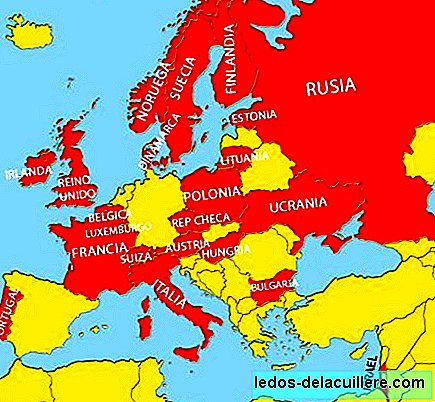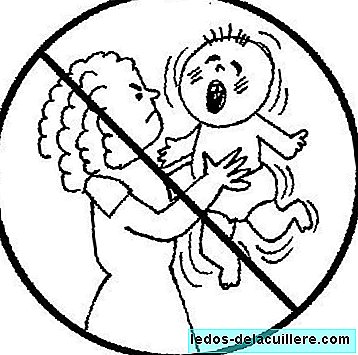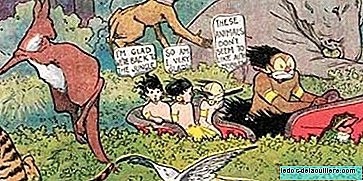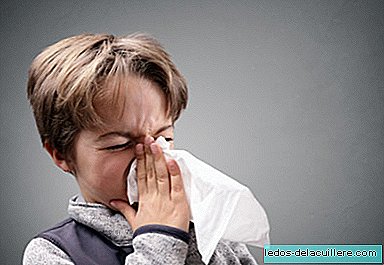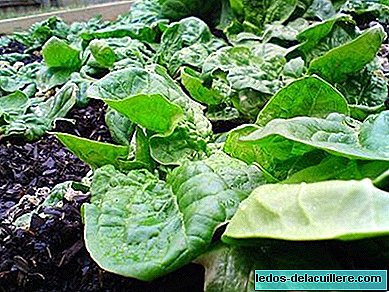
I recognize that until recently I had not worried about nitrates in the diet, until I delved into the topic of vegetables not recommended for babies before 12 months. Let's see what are nitrates and what are their possible health risks.
Nitrates are compounds present in the environment naturally as a result of the nitrogen cycle, but which can be altered by various agricultural and industrial activities. Sometimes they are used in agriculture as fertilizers.
They are also used in food processing as an authorized food additive. For example, some nitrate and nitrite salts are used as additives, especially preservatives in meat products.
The consumption of vegetables and vegetables is the main source of human exposure to nitrates, and to a lesser extent, water, which easily accumulates nitrates that the soil does not absorb, and other foods.
Nitrate itself is relatively little toxic, its toxicity determined by its conversion to nitrite. Nitrate can be transformed into nitrite by bacterial reduction both in food (during processing and storage), and in the body itself (in saliva and gastrointestinal tract).
Factors influencing nitrate contamination of vegetables
There are several factors that influence nitrate contamination of vegetables, and one of them is the vegetable species. For example, fruits, tomatoes, cauliflowers or green beans accumulate very little nitrate in their vegetable mass.
Conversely, other plant species accumulate nitrates in their green parts: lettuce, spinach, chard ... generally presenting higher concentrations of nitrates. Other vegetables that accumulate them are red beets, turnips or carrots.
The European Union has regulated in species such as lettuce and spinach, as well as in baby foods, the maximum limit of nitrates that they may contain at the time of being commercialized in the different seasons of the year.
They can also influence the mixing of urine fluids and excrement of domestic animals due to poor livestock or agricultural practices (human and animal organic waste are the main source of nitrogen and the traditional fertilizer for plants), industrial waste and poor management of the trash. All this contributes greatly to the enrichment of waters with nitrates, causing ecological imbalances.
Other improper agricultural practices, as the development of an intensive and monoculture-centered agriculture leads to an abuse of inorganic fertilizers. The farmer, to obtain the maximum yield of his crops makes an indiscriminate and systematic use of nitrogen fertilizers of chemical origin, which by swelling the crops with a large amount of water, increase their weight and with it the production, but to the detriment of their quality and safety.
Another decisive factor in the accumulation of nitrates in vegetables is The GreenHouse. With this system, due to the direct lack of sunlight, the crops do not properly metabolize the fertilizer with nitrates. Generally, the use of greenhouse doubles or triples the accumulation of nitrate.
Organic farming avoid all these risk factors, offering healthier products although, on the other hand, somewhat more expensive.

Risks of excess nitrates
To produce poisoning in animals or adults, a high dose of nitrates-nitrites is needed. However, in children and especially in babies, minimum amounts would be sufficient to trigger serious disorders.
In the first months of life, the baby's stomach still does not produce a large amount of acid, which favors the settlement of bacteria in the intestine. These bacteria can directly transform nitrates ingested into nitrites.
As babies during the first months of life have a special type of hemoglobin (fetal hemoglobin) that is easily transformed into methemoglobin, when nitrite enters the circulatory system this transformation occurs, which leads to symptoms of choking and blueness of the baby's lips With serious consequences.
On the other hand, epidermiological studies have positively correlated agricultural areas of high use of nitrogen fertilizers with cancer incidence (nasopharyngeal, esophageal and gastric).
And we are only focusing on the risks of excess nitrates for health, but the environment is also negatively affected and the balance on land, sea and air is threatened.
There are some tips to mitigate the effects or presence of nitrates in food, about which we will return soon.
But it does not stop producing some restlessness to know that we are exposed to these risks, especially the small ones of the family or those that take a vegetarian diet. Perhaps the issue is not to abuse a certain type or types of food to avoid nitrate accumulation.
After all this data, the logical thing is that the authorities have regulated the level of nitrates in food and water, and so it is established in the European Unit, so in principle in this area the marketed vegetables should not exceed the appropriate limits.


